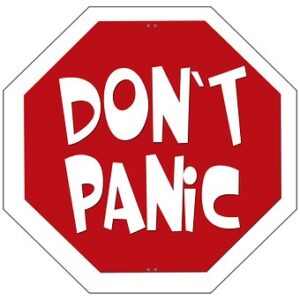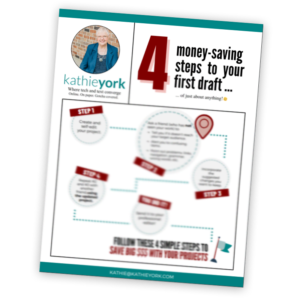It’s an unhappy moment.
Ramping up to an acceptable first draft

If you are that author, let me share suggestions to save you $$.
This will probably cut your expense by at least a quarter or a third.
You’ll need your manuscript and two friends who love to read in your genre … and will be honest with you about your writing.
Use your grammarian buddies who complain about spelling and
grammar (even on billboards) and find problems in every book they read. 🙂
If you blow it … they’ll let you know!
I provide my clients with my list of 7 Deadly Fillers I remove from every document. Other editors’ lists may vary, but if your friends eradicate those words, you’ll probably save money.
Now, when it comes to your two buddies: hopefully, they’ll work for free.
But I suggest planning to buy large pizzas loaded with toppings.
Just sayin’!
4 money-saving steps to your first draft
I admit, #1 is a biggie!
-
- Finish your carefully written, self-edited (at least twice) file.
- Ask a friend (who has not seen the document) to read through it and
- Tell you if it doesn’t reach your target audience.
- Alert you to confusing items.
- Point out issues: grammar, spelling, wordiness, repetition, etc.*
- Incorporate the suggested edits you want to keep.
- Repeat #2 and #3 with another friend, using the updated document.
* THIS is your biggest $$ saver. Fixing these can take a lot of
time, as you’ll see reflected in your editor’s invoice. Wrangle text
issues early to save time and money on your project.
Now you have your first draft!
( Infographic outlining this process available below. )
 It’s worth the extra effort
It’s worth the extra effort
We editors l-o-v-e a well-written first draft.
Sure, the file needs some help.
But we have the luxury of (mostly 🙂 ) enjoying the journey.
Provide this breath of fresh air, and you probably won’t need a different editor for every project.
Bonus: your friends’ changes may rescue your project timeline.
Help us help you stay on budget and on schedule
The more efficiently we can work, the better we can work on your behalf.
If you follow my four money-saving steps to your first draft, you’ll discover:
A little up-front work can mean crossing the finish line within budget.
Plus, you might find your perfect editor!
(Check out the fun mini flowchart, below.)
Join the Conversation
It’s your turn! Please select one of these discussion topics, or bring your own.
• Which of my suggestions surprised you? Why was it a surprise?
• Tell us about your favorite editor.
• What is your primary writing goal or writing dream?
Please share this post, subscribe so you won’t miss my other offerings, and scroll down to join the conversation in the comments section.
Let’s all learn from each other
Thank you for stopping by.
I know you’re busy, and I appreciate your time.
Contact me if you have questions about this post, or need help non-overwhelming a project. I’m here for ya! 😎
Download this infographic as a quick 4-Steps reference. 
Here’s one of my earlier posts on this topic.
Rescue your proofing budget!


0 Comments